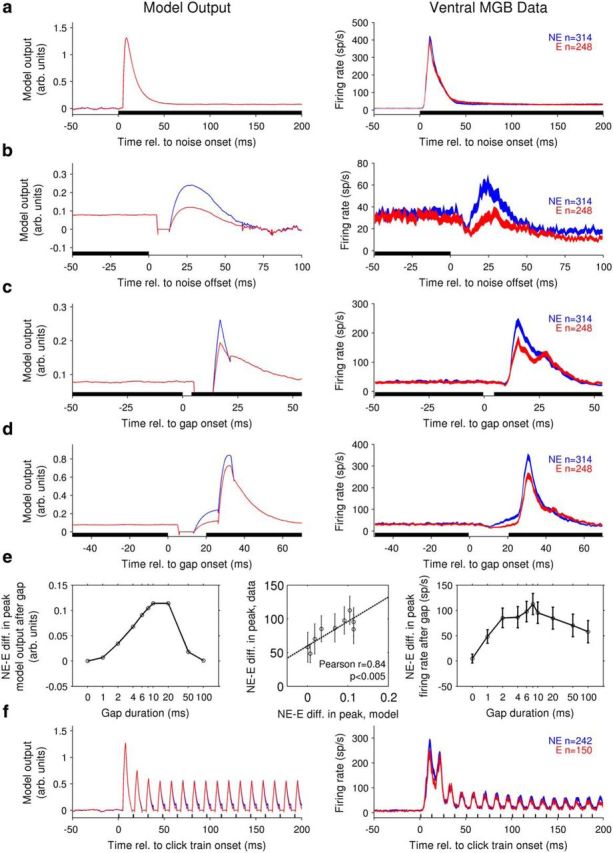Figure 6.

A simple phenomenological model of central auditory processing can reproduce both similarities and differences between nonectopic and ectopic animals in the temporal features of auditory thalamic responses. Parameters for “nonectopic” (blue) and “ectopic” (red) models were identical, except that the weighting of the offset-sensitive channel was reduced in the “ectopic” model (for details, see Fig. 5 and Materials and Methods). a–d, Model outputs for simulated stimuli (left column) and ventral MGB population PSTHs to acoustic stimuli (right, conventions as in Fig. 4) are shown for the following: a, onset of a 200 ms noise; b, offset of a 200 ms noise; c, 4 ms gap in noise; and d, 20 ms gap in noise. e, Left, Difference between peak “nonectopic” and “ectopic” model output after a gap in noise, as a function of gap duration. Right, Mean ± SE of difference between peak nonectopic and ectopic ventral MGB population firing rates after a gap in noise, as a function of gap duration. Middle, Direct comparison of ordinate values from right and left plots. Each open circle represents a different non-zero gap duration. Dotted line indicates least-squares fit. Results of Pearson's correlation test are shown. f, Model output (left) and ventral MGB population PSTHs (right) for click train stimuli with 12.5 ms ICI. Conventions as in a–d. Model output is in arbitrary units and is baseline-subtracted to show differences from model output in “silence” (simulated as very low-level, 10 dB SPL noise).
